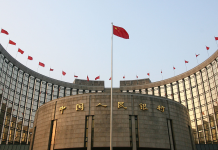Beijing: In 1956, the J-5, a Chinese-built single-seat fighter jet based on the Soviet MiG-17, was put into mass production. Such a product of imitation, of course, struggled to meet China’s actual needs.
Fast forward to July 4, 2021. Chinese astronauts Liu Boming and Tang Hongbo exited the space station core module Tianhe wearing the new-generation domestically crafted Feitian extravehicular spacesuit. At roughly 2 meters in height and 130 kg in weight, the suit can be put on or taken off in five minutes, and guarantees the astronauts’ safety during their spacewalk. From J-5 to the Feitian spacesuit, China’s aeronautics and astronautics-related design witnessed a qualitative leap in transitioning from imitation to independent design, Xu Ping, a professor at Beijing Normal University (BNU), said when addressing a design-themed forum in Beijing via video link on August 7.
Of course, the realm of design does not only exist in far-flung outer space. From cars, architecture, fashion to a table or a pen, the concept of design in its purest form connects directly to our daily lives and contributes to economic and social development.
Design should create value and serve the economy, Guo Yushi, Executive Director of Hispano Suiza China, a Beijing-based head-hunting company in the design field co-hosting the forum, told Beijing Review.
Design plays an important role in the conversion from pure product to brand, from “made” to “created.” Its core function could pass huge economic value onto related industries, Guo added. Industrial design could, for example, help promote the development of the overall manufacturing industry.
In advanced economies, the expansion of the industrial design sector is on the fast track, according to the annual report on the development of the design industry in China (2019-20) issued by Beijing Industrial Design Center. The market in the Republic of Korea reached about 16.14 billion yuan ($2.47 billion) in 2018 and in the UK, the niche generated a gross value added of some 136.9 billion yuan ($21.14 billion) in 2016, according to the report.
In 2015, China issued a blueprint to build on China’s current level of industrialization and enhance the quality of products and equipment made in China, as well as to reduce China’s dependence on foreign technology and endorse Chinese technological manufacturers in the global marketplace by 2025. The initiative calls for the upgrade of innovative design capacity and encourages enterprises to set up research and design centers in a bid to export their own branding.
The historical experience of industrialized countries has demonstrated that the more active a country’s industrial design, the stronger its capacity of industrial innovation and competition, Zhejiang Daily reported on August 4.
The manufacturing enterprises in Zhejiang Province widely focus on industrial design across various sectors, including automobiles, home appliances, and household products. The strength of industrial design consequently has not only boosted the sales volume of a single product or the fate of an entire enterprise, but also promoted industry-wide development at large, the newspaper further read.
– The Daily Mail-Beijing Review News exchange item






